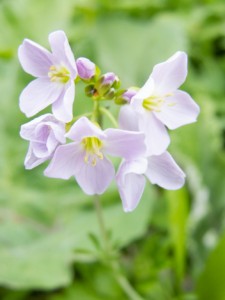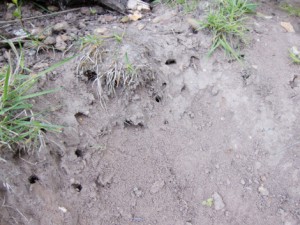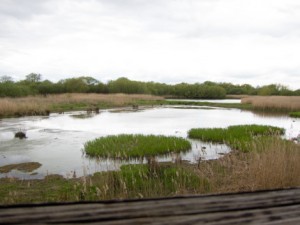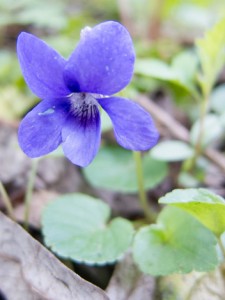I have had a love-hate relationship with Brandon Marsh for many years, but whenever I am feeling at a loose end or a bit grumpy then I plan an afternoon over at the reserve. Today was one of those days as I paid a traditional holiday visit to what is really a giant reed bed with some other watery bits.
I was greeted by three swallows flitting across the entrance way, shards of summer against an leaden and cloudy sky – perhaps these were a positive portent for the afternoon. I started with a traditional stop at the Badger Tea room – no badgers and not really much cake either, so just a hot chocolate for me. The tea room was noisy but all conversations blended into a general hubbub. There were two large tables of people, I don’t think they were connected, one populated by older, mainly male visitors to the site, the other younger and with more than one token woman.
There were no birds to be seen on the feeders outside, but as only the nut feeder had any contents this was not really a surprise. I downed my hot chocolate with more speed than the £2.20 cost deserved but I was eager to go out birding. It was a bit cold and breezy, although the sun did come out at times (as did a bit of rain) so today was all about the birds and I had no expectation of seeing any insects.
At the start of my walk, the sound of the cement works pretty much drowned out everything, even the most vociferous of chiffchaffs. I was briefly distracted by what I thought was a Volcuella Bombylans (or bee mimicking hoverfly) sitting on the dragonfly ID board and doing a not very good impression of a bee, but it stayed no time at all, so I am not one hundred per cent convinced. A little further on greylag geese honked in numbers to drown out the cement works and then I heard the whisper and rustle of the wind in the just opening leaves of the tall poplars.
I headed to the main set of hides and suddenly came across a carpet of violets which was a bit of a surprise; round the corner there was a bank of primroses still in full flower. I bent down to take a photograph of a cuckoo flower and heard, just twice, cuckoo, cuckoo off in the distance. How appropriate!
Cuckoo Flower
There are still long tailed tits contact calling, a really comforting sound from what is probably my favourite bird (although on another day I might have to admit that a red kite is in fact my actual favourite).
Whilst I was looking at what were probably the holes made by some species of mining bee, it was too cold for them to venture out, I happened to look up briefly and got a cracking view of a whitethroat in the tree in front – my first for the year. It then darted off into some nearby scrub, but started singing at me. I also heard a sedge warbler.
Mining Bee Holes?
The first proper stop that I made was at the Teal Pool Hide. I usually wander in just in case there’s something interesting on the pool outside the windows, and every time I usually find that there are actually no birds at all, not even dull ones. Today there was a family of mallard; mum and ten or eleven chicks. I should have been able to count them, but they kept zooming and careening about.
View from the Teal Pool Hide – note the lack of teal or other birds
I often describe Brandon Marsh as an all or nothing place – today it had almost all. There were some ringed plovers patrolling the edge of the water. One of them looked a little different to the others, it had more black on it and, on closer inspection (using the magnificent zoom capabilities of my telescope) I discovered that it had a black tip on the end of the orange bills. Likewise, the zoom also showed a distinctive eye ring on the other birds – so that would be one Ringed Plover and several Little Ringed Plovers. They were quite active and flew about the different islands. They also looked quite tiny compared with the redshanks that were wandering around in the slightly deeper water as well as along the shore (I love the whistling of the redshanks). Whereas the ringed plovers spent their time looking along the shoreline, the redshanks stuck their head in the water up to their eyeline. The sandpipers (common or green, no idea which) wandered along the mud, bobbing away, but not getting in too deep. There were also lapwing and oystercatchers on the islands, possibly nesting. A sleeping oystercatcher kept one eye on proceedings and a white butterfly wandered past – the sun must have come out.
Sand martins were there in abundance, zooming about and checking out the two sets of nests that have been provided for them – this is the only place I’ve seen sand martins – I hope they do well. There were a couple of terns near the tern raft – but the raft was occupied by two sleeping greylags – apparently they hand’t read the tenancy agreement.
There was a reed warbler singing outside the hide making his presence known. It would make brief flights upwards into the air, chest puffed out, wings back, then plummet down into the reeds and slowly climb up one of the stems and sit warbling away for ages. I can’t tell the difference between reed and sedge warblers and thought it sounded like a sedge warbler – shows how much I know. Someone recently told me that reed warblers just don’t stop singing. I always think of sedge warblers as being more scratchy and reed warblers being more rounded in their song. There was a man in the hide with an expensive camera lens who got some great shots who said it was a reed warbler. Later on he admitted he couldn’t remember whether it was the sedge or reed warbler that had the eye stripe – it is the sedge warbler and this had an eye stripe – I still have never seen a reed warbler! But at least I was right about the song – it was scratchy and he did sometimes pause for breath.
Wild Violet – so very pretty



